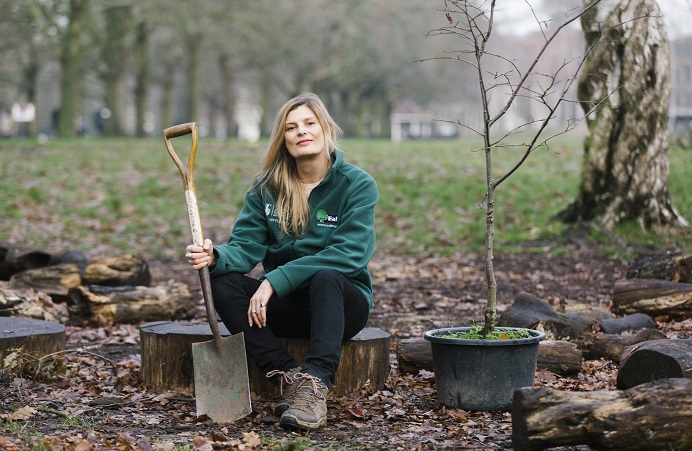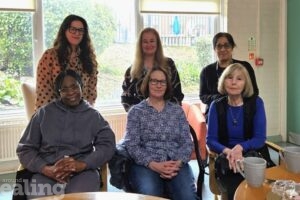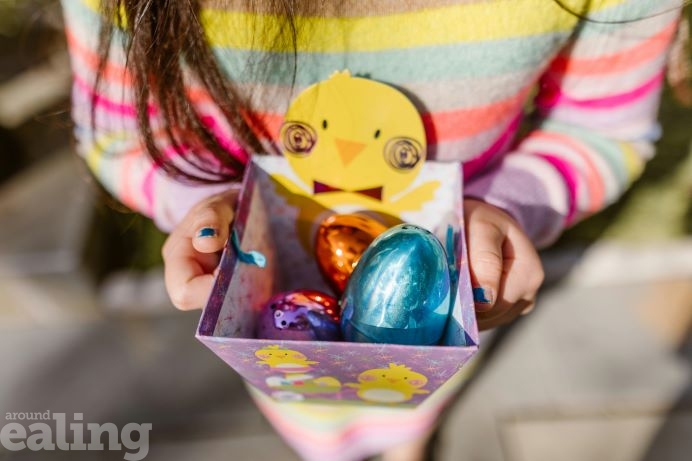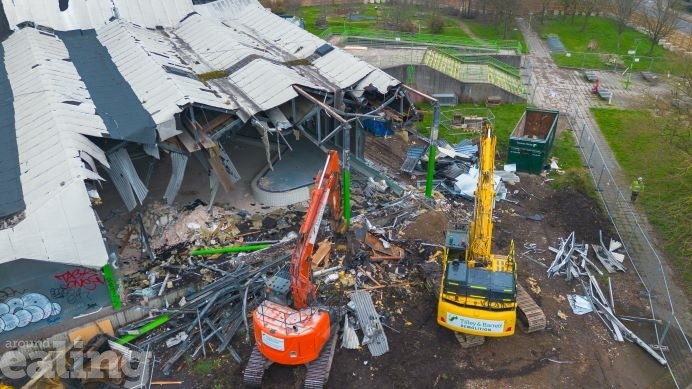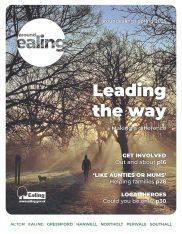Successful partnerships with community groups are helping to create a greener, more nature-friendly borough as Ealing council launches its Biodiversity Action Plan (BAP) this spring.
The BAP aims to increase or preserve the diversity of local wildlife and plant life, while also encouraging ‘carbon capture’ – with plants hoovering up more of the harmful pollution we create through our everyday activities like driving; and improving the air that we all breathe into the bargain.
Vanessa Hampton, senior park ranger (pictured above) explained more: “The BAP provides the framework to protect and enhance biodiversity across the borough.
“As much as we want to improve our green spaces and waterways these plans are not just about these areas, it is as much about built-up environments too, places where people live, work and shop. It calls for everyone in the borough to contribute – it is a partnership and local people can make a difference.
“Practically everywhere can be enhanced and improved for nature – plants, shrub and trees can grow around and up buildings, with green roofs, swift and bat boxes providing more homes for wildlife.
“We will be working with new BAP objectives to maintain important habitats and species and create opportunities to make the borough more biodiverse – whether that is advice, events or training. We hope to guide and encourage more people to take positive actions and connect with nature at the same time.”
Whether it is sowing wildflower meadows, planting thousands of new trees or creating more nesting space for birds, the work is only just beginning.
The Ealing Wildlife Group (EWG) is making plans for spring as it joins the council’s park rangers to carry out vital work in the borough’s green spaces. The local organisation is involved in all sorts of wildlife initiatives, including installing nest boxes for an array of species including little owls, blue tits and pipistrelle bats.
EWG founder Sean McCormack said: “We have not been able to put on our normal selection of community events, due to the pandemic, but we have always managed to keep up the momentum and not lose focus on what we want to achieve.
“We have moved some activities online, for example our dawn chorus walk – in normal times we would attract up to 30 people and this time round we did Facebook live event which actually reached a lot more so that is really positive.
“But the sooner we can get local people and residents back to support us the better. In the meantime, I would urge anyone who is interested in our work to sign up for the EWG newsletter and keep up to date with everything going on.
COVID-19 has slowed some of the progress of the EWG’s plans for increasing biodiversity in the borough, but as we move further towards normal life it is hoped that some of the bigger projects will be able to kick off in the coming weeks and months.
Sean said: “We have been putting nest boxes up for birds and bats and hopefully we will be able to kickstart a number of ambitious projects.
“We hope to start our school engagement programme with some schools in Hanwell, which involves teaching about nature conservation and providing kit to attract wildlife.
“Over at the Costons Lane allotment in Greenford, which we are working on a project to create a nature reserve we will be laying the groundworks for a learning hub and putting in a pond and wetlands to hold water and attract wildlife.
“One of our most ambitious aims is the reintroduction of harvest mouse, which is in decline nationally and we believe to be locally extinct. It is a missing piece of the ecosystem and we’ve mapped out some suitable sites and we have volunteers surveying too as part of our preparation.”
The partnership between local organisations such as the EWG, volunteers and the council remains vital in creating a more nature-rich borough in the future and the benefits of this are felt by both people and the local environment.
Sean said: “Our local parks and green spaces are definitely seeing a benefit from being managed more for wildlife. On a walk through parts so of the borough you have a chance of seeing up to five birds of prey – that is really something and thriving predator species is indicative of a healthy ecosystem.
“We have three breeding species of owls here as well. Little, tawny and barn. Not many areas in London can boast that.
“Spring is a great time for people to engage with nature too. People are noticing birdsong and realising how good it is for their mental health and just taking a walk in your local area and taking in local nature can do you the world of good.”
Councillor Jasbir Anand, the council’s cabinet member for environment and climate action, said: “Our continued work with an array of hard-working local organisations is playing a vital role as we look to increase biodiversity and enhance the wonderful green spaces across the borough.
“As we launch our BAP in the coming weeks, I’d like to thank our partners and our dedicated volunteers who use their time to contribute to the array of projects taking place.”
The work is all part of the council’s climate action strategy which was confirmed by the council’s cabinet in January. It outlines a comprehensive plan to respond to the climate emergency and support residents to lead greener lives.
- Many of us may overlook our front gardens but they are important green spaces right on our doorsteps. Find out how to maximise the potential of yours and help the local environment at the next Climate Action webinar on 4 March (6-8pm).
